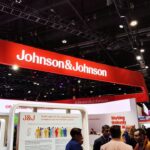Having already established a commercial infrastructure for its oral hereditary angioedema (HAE) drug Orladeyo and eager to pinpoint the source of its future growth, BioCryst Pharmaceuticals has struck a $700 million deal to buy Astria Therapeutics.
The deal will give the rare disease specialist control of a phase 3 challenger to Takeda’s HAE therapy Takhzyro.
North Carolina-based BioCryst already sells the daily oral capsule Orladeyo, which won approval in 2020 to prevent HAE attacks in patients 12 and older. Forecasting that Orladeyo sales will peak at $1 billion around the end of the decade, the company has been investing in drug discovery and scouting around for deals to drive its next phase of growth.
The search has resulted in an agreement to buy Astria for $13 a share, a 53% premium over the acquired biotech’s closing share price Monday.
BioCryst is buying Astria for navenibart, an injectable, long-acting inhibitor of plasma kallikrein. Takeda already sells an injectable plasma kallikrein inhibitor, Takhzyro, which is administered every two or four weeks.
On a call with investors to discuss the deal, Charlie Gayer, chief commercial officer at BioCryst, said roughly 5,000 HAE patients in the U.S. use existing injectable prophylaxis therapies despite needing to receive frequent, sometimes painful injections.
“What if they could control their attacks with similar efficacy with an injection that doesn’t hurt and do it two to four times per year instead of 24 or even 12 times per year?” Gayer said. “Low dosing frequency is the main remaining unmet need identified by HAE patients and their physicians. They see every-three-month dosing as the tipping point that would motivate a switch. That is the potential of navenibart.”
Evidence that navenibart has the profile targeted by BioCryst comes in part from an open-label trial that delivered data in June. Astria linked three-month dosing to a 95% mean monthly attack-rate reduction. The reduction in the six-month cohort was 86%. Gayer said achieving three-month dosing is the most important goal, while showing six-month dosing is effective would be “icing on the cake.”
Related
Astria is studying both regimens in a phase 3 trial that started enrolling patients this year. Top-line data are due in early 2027. The timeline informed Gayer’s belief that navenibart is likely to be the first HAE drug to launch with the three-month dosing that BioCryst has identified as key to persuading patients to switch from Takhzyro.
If navenibart wins approval, BioCryst expects to largely rely on the operation it built to support Orladeyo to launch the drug. The low level of investment needed for commercialization and timing of the launch, which is scheduled for around when Orladeyo sales are forecast to plateau, led BioCryst Chief Financial Officer Babar Ghias to predict navenibart can “supercharge” earnings growth well into the next decade.
Astria’s pipeline also includes an OX40 antagonist, STAR-0310, that is in development for the treatment of eczema. BioCryst plans to seek strategic alternatives for the asset.
Jon Stonehouse, CEO of BioCryst, told investors STAR-0310 is “a really interesting product” but is outside the biotech’s focus on rare disease. That led the CEO to conclude the asset is “better in the hands of somebody that’s in that area.”



